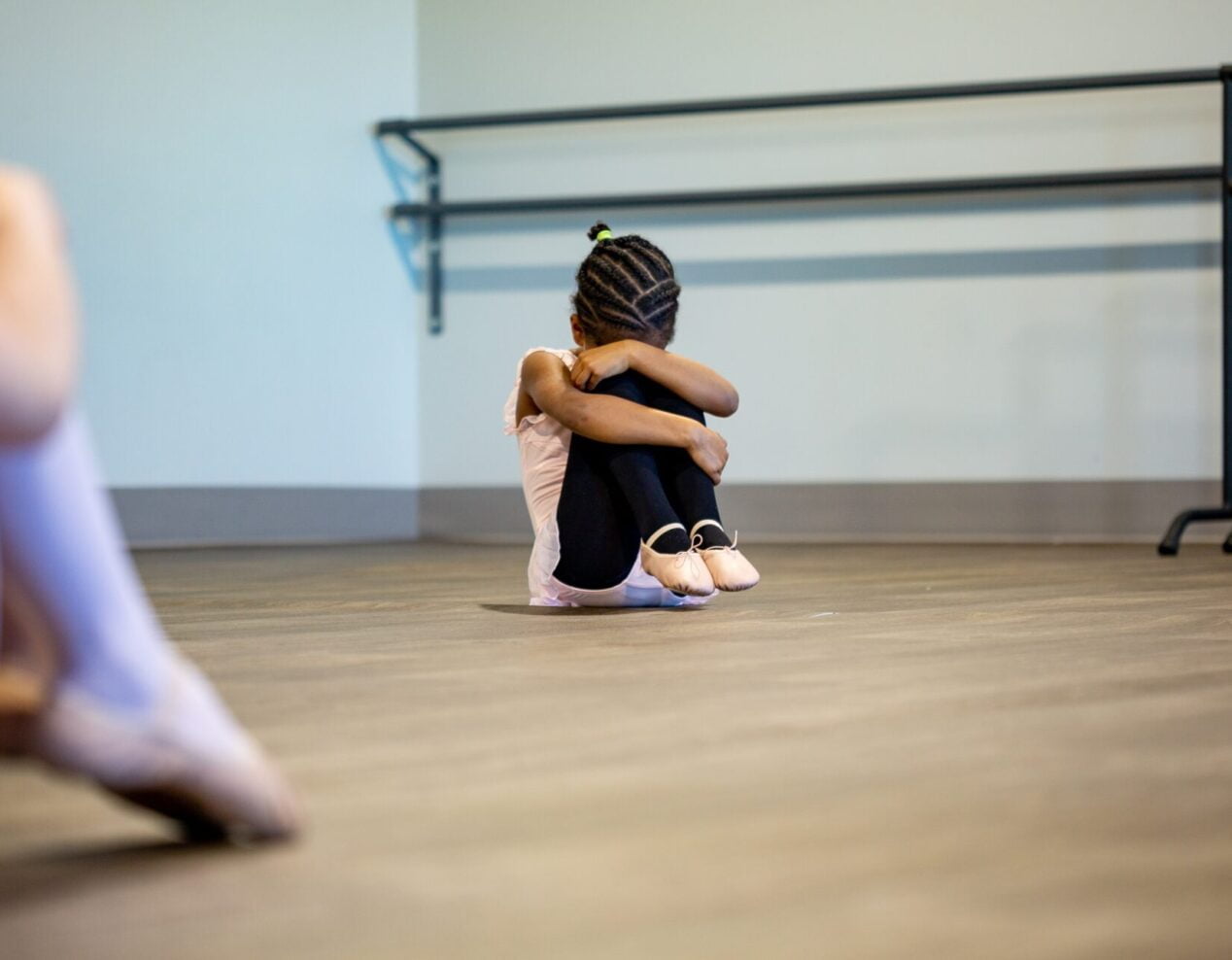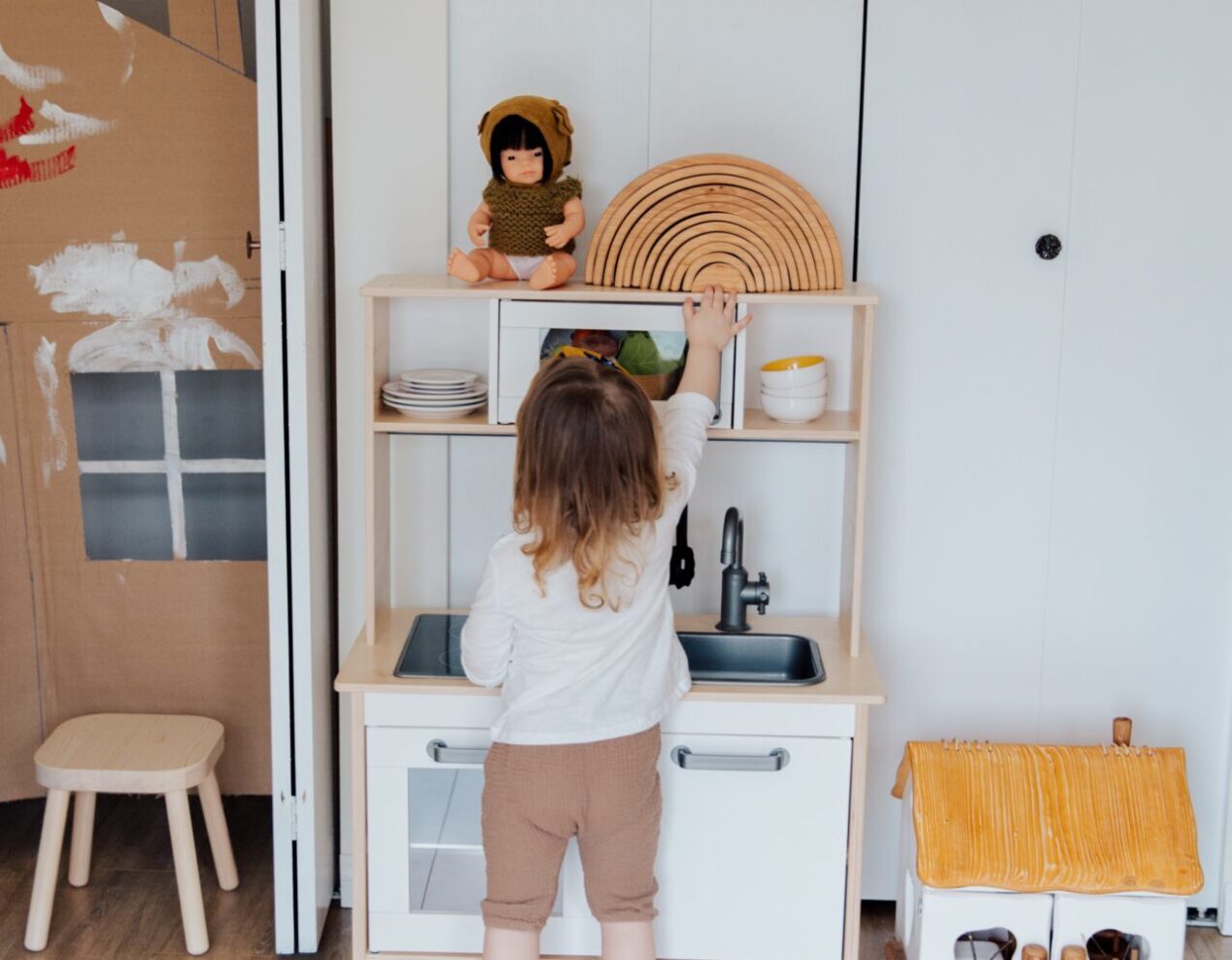Guiding your toddler through new experiences of fear

A child clutching the hands of a female adult
There is a typical phase for many children between 24 and 30 months of age where fears become more evident. Toddlers at this stage, regardless of their language capabilities, may struggle to articulate their fear. As they continue to develop, their perception of the world expands, making it seem vast and unpredictable. Some aspects of this new world can be intimidating and may manifest as anxiety, clinginess, mood swings, or other unpredictable behaviors.
As their self-awareness increases, the world can seem larger and more unpredictable, and this new, scary world can be challenging to navigate. Some fears are more identifiable, like bugs, storms, or darkness. Others are harder to comprehend, like a flushing toilet, a running vacuum cleaner, or escalators.
Here’s how you can support your toddler as they navigate these new fears:
Acknowledge their fears
When your child is frightened, try to provide a platform for them to express their fears. Even if they lack the language skills to articulate their emotions, demonstrating that you take their fears seriously can go a long way. For example, if they are afraid of a dog, you might say, “I see that you’re scared of that dog. It’s moving quickly and barking loudly, which can be frightening. It’s okay to be scared. Would you feel safer if I held you?”
You can revisit the fear later and ask them what they found frightening about the dog. If they struggle to articulate their feelings, you can recount the situation to help them understand. It may feel counterproductive to recount a negative experience, but it aids toddlers in linking their emotional brain to their reasoning brain.
Discuss fear during calm moments
Toddlers have active imaginations but may struggle to differentiate their imagined fears from reality. For example, the darkness can be daunting due to the unknown. Trying to soothe a child’s fear of the dark at night can be difficult. Instead, discuss what to expect during daylight hours. You can reassure them by saying, “Soon it will be night time, and your room will be dark. But remember, everything in your room remains the same, even when it’s dark. The sun has just set and will return in the morning.”
Use pretend play and rehearsals
Engaging in pretend play in a safe setting can be a powerful tool to address fears. If your toddler is afraid of a booster shot, you can role-play being at the doctor’s office. Allowing them to play the doctor or nurse can make them feel more in control. Give them phrases that healthcare providers use, like “This might sting a bit, but it will only last a second. Then you’re all done, and you can pick a special sticker or prize.”
Utilize storybooks about facing fear
Children’s books can be beneficial in helping toddlers anticipate potential fear-inducing situations (like a visit to the doctor or encountering a bee). Witnessing another child in the story navigate a scary situation can reassure your toddler that they too can handle it.
Recognize actual dangers
Some fears are beneficial and protect our children from harm. It’s essential to reinforce fears that keep them safe, like not stepping into the street alone or approaching a dog without the owner’s permission. You can contrast these rational fears with irrational ones, like being afraid of the vacuum cleaner. When vacuuming, you can reassure your child that they are safe and won’t be sucked into the vacuum cleaner.
Allow children to face their fears incrementally
If your child is afraid of taking a bath, consider using a small tub of water and allowing them to dip just their hands in it or stand in it. This allows them to become comfortable with water in smaller, manageable doses. Similarly, smaller animals might seem less intimidating. You can ask the owner of a small dog if it’s friendly and if it’s okay to pet it. Your child may not be ready to join in immediately, but observing you do it safely can pave the way for future interactions.
Sometimes avoidance is the best option
Sometimes it’s easier for everyone involved to avoid the source of fear, whether it’s rational or not. For example, you might give your child a dim nightlight, cross the street to avoid a dog, or offer a sponge bath as an alternative to bathing. Continue to engage in conversations about their fears, and offer reassurances that you’re there to support them. These discussions will go a long way in helping them overcome their fears in their own time.



